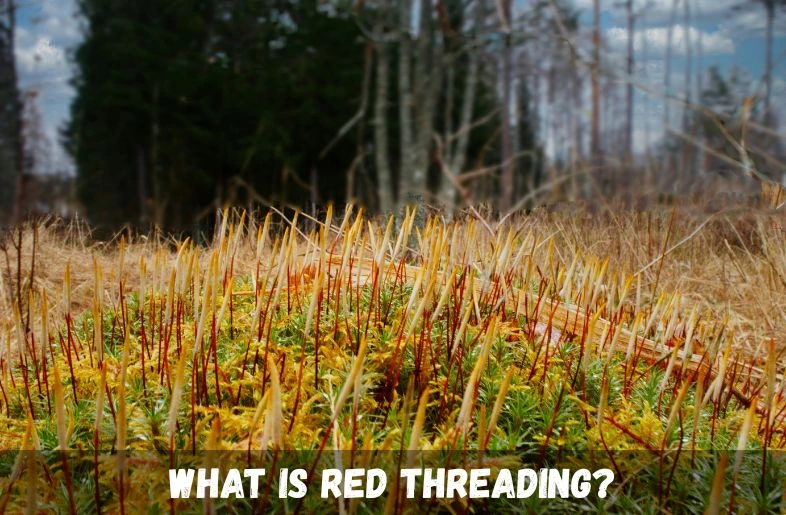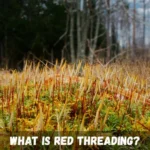Healthy green lawns are the pride of every homeowner. However, common lawn illnesses can sometimes affect even the best-maintained lawns. One such condition that affects cool-season grasses, especially in regions with damp weather, is red threading. Red thread disease can detract from your lawn’s visual appeal and indicate underlying care problems, even if it is not fatal. This guide offers a complete, professional overview of what red threading is, how to recognize it, why it happens, and what you can do to treat it effectively without compromising your lawn’s long-term health.
Understanding What Red Threading Is
Red threading, also known as red thread disease, is a foliar turf disease caused by a fungal pathogen called Laetisaria fuciformis. This fungus primarily targets the leaves of grass plants, leaving the root systems untouched. Because of this, the grass is usually able to recover fully with the right care and environmental improvements.
The tiny, thread-like filaments the fungus forms on diseased leaf blades are the source of the disease’s name. These pink or red strands are often visible to the naked eye and are among the clearest signs that your lawn may be suffering from red threading. The fungus thrives in cool, moist weather, making spring and autumn the most likely times for an outbreak.
Identifying Red Threading in Your Lawn
Red threading can be identified by its visual symptoms, which begin subtly and become more pronounced over time. The earliest signs often involve patches of discolored grass that appear faded, pink, or light brown. These patches vary in size and shape, typically ranging from a few inches to over a foot in diameter.
If you look closely, you could notice tiny pink or scarlet threads protruding from the tops of the grass blades. These threads are most visible in the early morning when dew is still present. In high humidity or after rain, the fungus may also appear as cottony or gelatinous patches clinging to the blades. Grass affected by red threading dies from the tip downward, and in severe cases, large sections of the lawn may take on a bleached or straw-colored appearance.
Despite its alarming look, red thread does not destroy the plant’s crown or roots, meaning the damage is mostly cosmetic. With prompt intervention, most lawns recover within a few weeks.
What Causes Red Threading to Develop
Red thread fungus becomes active under specific environmental conditions, especially when your lawn is under stress. Cool temperatures combined with persistent moisture create the perfect setting for the disease to take hold. Soil that is compacted, poorly aerated, or deficient in nitrogen often lacks the vitality needed to resist fungal invasion.
Grass that is hungry for nutrients, particularly nitrogen, becomes more vulnerable. Lawns that are watered too often, mowed improperly, or allowed to accumulate excessive thatch are also more susceptible. The fungus survives in infected plant debris and thatch as hardened structures known as sclerotia. These can remain dormant over the winter and become active again when the right conditions return.
Water, wind, lawnmowers, and even shoes can spread the disease. Once active, the fungus quickly moves from one grass blade to another, particularly in damp, shady, or heavily trafficked areas.
Why Red Threading Thrives in Certain Seasons
While red thread can appear at any time of year, it is most commonly seen in late spring and early fall. During these periods, temperatures usually hover between 59°F and 77°F (15°C to 25°C), which is ideal for fungal activity. Frequent rainfall or heavy morning dew prolongs leaf wetness, a condition in which the fungus thrives. Lawns in temperate climates, particularly in the UK, northern Europe, and the northern United States, are especially prone to outbreaks during these months.
When summer transitions into autumn and the nights become cooler while the soil remains warm, humidity often increases. This combination of warm soil and moist air is a perfect storm for red thread development, particularly if the lawn is under-fertilized or compacted.
Effective Treatment Strategies for Red Threading
Although red thread disease might look concerning, it is relatively easy to manage when addressed early. The most effective way to treat red threading is to strengthen the grass so that it can outgrow the infection naturally. A key part of this strategy is applying a nitrogen-rich fertilizer. This promotes vigorous leaf growth, allowing the grass to recover and push out infected foliage. During the growing season, fertilizers that include ammonium sulfate are most beneficial and ought to be administered at the prescribed rates.
Another important aspect of treatment involves improving air circulation and soil health. Aerating your lawn reduces compaction and allows roots to access more oxygen and nutrients. Dethatching is equally important; by removing the layer of organic debris that accumulates on the surface, you eliminate the material where fungal spores often reside. Raising your mower blades to a suitable height and mowing only when the grass is dry can also limit further stress on the turf.
In some cases, chemical treatments may be required. Fungicides are usually reserved for persistent or severe outbreaks. Products containing active ingredients such as trifloxystrobin, flutolanil, or azoxystrobin are commonly used to suppress red thread fungus. These should be applied according to manufacturer instructions and alternated to prevent resistance. In countries like the UK, however, many fungicides are classified as professional-use only, which means homeowners may need to hire certified lawn care specialists to apply them legally.
Preventing Future Red Thread Infections
The best long-term approach to treating red thread disease is prevention. A healthy lawn is naturally more resistant to fungal infections, so keeping your grass in optimal condition year-round is crucial. Start by maintaining a regular feeding schedule that includes balanced applications of nitrogen, phosphorus, and potassium. Seasonal soil testing can help you identify nutrient deficiencies before they lead to visible problems.
Improving drainage and aeration is also vital. Lawns with compacted soil or standing water are prime environments for red thread fungus. Aerate at least once a year, and consider topdressing with compost or organic matter to improve soil structure. When watering your lawn, do so deeply but infrequently, and always in the early morning hours to reduce leaf wetness overnight.
Routine lawn maintenance should include mowing at the correct height, removing excess thatch, and avoiding excessive use of water-soluble nitrogen in late summer or fall. Choosing turfgrass species that are less susceptible to red thread, such as Kentucky bluegrass or hard fescue, can also help if you’re establishing a new lawn or overseeding an existing one.
When to Seek Professional Assistance
While most cases of red thread can be managed with good lawn care practices, there are situations where professional help is advisable. If your lawn experiences repeated outbreaks despite consistent treatment, or if the affected area continues to expand rapidly, it’s best to consult a lawn care specialist.
Professionals can perform a detailed soil analysis, apply high-grade fungicides, and create a tailored care plan based on your lawn’s unique needs. Their expertise ensures not only a faster recovery but also long-term prevention through scientifically backed strategies.
Conclusion
Red threading in lawns is a common, non-lethal fungal disease that serves as a clear indicator of poor turf health or environmental stress. Although it causes noticeable aesthetic damage, it can be reversed through proper identification and targeted care. By learning how to identify the symptoms early and applying the appropriate treatments—especially focusing on nutrient support, lawn aeration, and moisture management—you can effectively eliminate red thread and restore your lawn’s vitality.
Keeping your lawn in good condition throughout the year is your best defense against red threading. With a proactive and informed approach, you won’t just be reacting to lawn disease—you’ll be preventing it.


